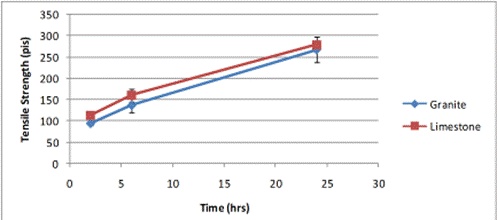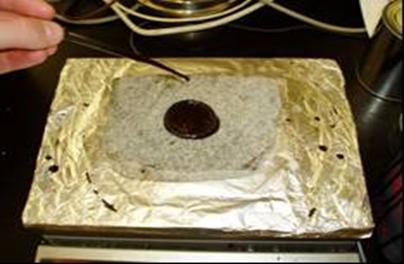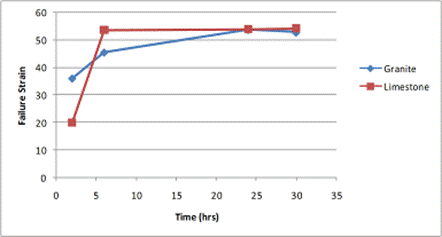|
New Test Methods to Measure the Performance Properties of Emulsions
Emulsified Asphalts — the Research Need As industry and state agencies continue to integrate green initiatives into practice, the need is growing for improved pavement management and construction methods to reduce the environmental impacts of new construction. There is an opportunity for emulsified asphalts to serve this function through their use in both spray and mixing grades. Spray grade emulsions are already prevalent in surface treatment applications. Mixing grade emulsions are used in stabilization and cold recycling. Cold mix asphalt is also proposed as an alternative to hot mix asphalt, and CMA technologies are being developed in some countries. As the use of environmentally friendly surface treatments increases, specifications and test methods related to construction and in-service properties of emulsions need to advance to enhance the reliability of surface treatment and cold mixture designs. Asphalt Research Consortium (ARC) researchers at the University of Wisconsin–Madison and the University of Nevada, Reno will focus first on spray grades used in surface treatments. The distresses experienced by surface treatments were first categorized as being related to construction or in-service use. Construction distresses were identified as early raveling, drain-out and flushing. In-service distresses were identified as late raveling, bleeding and fatigue/thermal cracking. Laboratory evaluation of the material in these two distress categories required separating the testing into two groups. Construction problems require testing emulsions, and in-service problems require testing residues of emulsions (1). The distresses noted are not new, and there are many indirect investigation methods that practitioners have used in the past. Also, various standards worldwide, including ASTM standards, European norms and French standards, have been established for the evaluation of emulsions. Most of these provide for empirical measurements, and while they successfully evaluate emulsion chemistry and provide simplistic ranking in terms of performance, they do not allow direct consideration of the climate, traffic and surface conditions necessary to achieve optimum field performance. Investigations and Results at UW–Madison In the second year of the Asphalt Research Consortium, one focus of UW–Madison researchers has been to develop test methods with existing equipment to predict behavior in the laboratory. To gain from existing experience worldwide, a project advisory group consisting of key industry, academic and agency representatives has begun to discuss and prioritize key distresses and identify test development needs. In response to guidance from the advisory group, ARC researchers centered their attention first on developing tests to predict early raveling in chip seals. Early raveling can be caused by loss of adhesion between the emulsion and aggregate surface or through cohesive failure of the emulsion. Two tests were selected: A pull-off test and a Dynamic Shear Rheometer (DSR)-based strain sweep test. Neither test uses a new testing device. The Pneumatic Adhesion Tensile Testing Instrument (PATTI), developed by the National Institute of Standards and Technology for use in the paint industry and recently modified by FHWA and UW–Madison researchers (2), was selected as the best candidate test to measure adhesion and cohesion of emulsions applied to an aggregate surface. In the modified PATTI test, a pull stub is adhered to a substrate, and the loading mechanism is attached. Air pressure is applied, creating a tensile force in the vertical direction until the stub is separated from the substrate. The air pressure is converted to tensile strength, and the failure surface is qualitatively examined to determine if the mode of failure was adhesive or cohesive. The research team made considerable modifications to the current test procedure through control of flow rate and film thickness to minimize the variability of the test. The procedure involves curing the emulsion on an aggregate substrate for a given time, applying the pull stub, and allowing the pull stub adequate time to adhere to the surface of the emulsion before testing.
This graph shows the modified PATTI test results for a CRS-1HP emulsion cured on granite and limestone substrates. The modified procedure successfully produced repeatable results that display sensitivity to curing time. Both aggregate types correlated well with sweep test results from samples cured under the same conditions. The other (DSR-based) test is designed to evaluate the cause of early raveling by testing the emulsion cohesive strength in cyclic shear. During chip seal construction, a thin film develops between the aggregate surface and emulsion. Under traffic loading, this thin film is subjected to high cyclic shear strains; therefore, resistance to raveling in the field is dependent on the development of strain tolerance. In the laboratory, this distress was measured using a strain sweep procedure in the DSR (4). In the lab procedure, the stress required to deform the sample to a given level of strain is used to calculate the complex shear modulus (G*) of the material, and the G* is plotted over a range of strains. A reduction in G* indicates that the material is behaving non-linearly, thus experiencing damage. Evaluation parameters for this test were defined to indicate the strains at which the sample reached its linear viscoelastic limit (10 percent reduction in G*) and failure limit (50 percent reduction in G*) (3). cured on an aggregate substrate at a constant temperature and humidity. After the prescribed curing time, the emulsion film is scraped from the aggregate surface and tested in the DSR.
A CRS-1HP emulsion cured on granite and limestone substrates was tested at 35 ºC with different curing times. The test procedure was shown to be sensitive to curing time and to discriminate between aggregate types. Test results indicated that the emulsion on the limestone substrate had fully cured after six hours, and the emulsion on the granite after 24 hours.
To validate the usefulness of the PATTI and DSR test results, the ASTM D7000 sweep test is used to prepare chip seal samples and compare the measurements from the emulsion testing with the chip loss from the sweep testing. Results so far are very promising. Next Steps and Related Research Initial results from the PATTI and the strain sweep tests show promise for capturing the change in emulsion tension and shear properties as a function of curing time. Further work in ARC Year 3 will compare results for different emulsion types cured on aggregates of different mineralogies and porosities. The effect of environmental conditions on chip seal performance in the field must also be addressed through laboratory curing at different temperatures and humidity levels. In an effort to maintain consistency between current practice and the newly proposed tests, correlations between results of the current quality control tests and the new tests will be evaluated. In order to set reasonable performance limits, individual components and the entire system will be tested with the sweep test; the results will be used to discriminate between failing and successful emulsion/aggregate combinations. ARC research is currently in progress to evaluate the sweep test for possible modifications, and the research team is reviewing other researchers’ recent ideas for modification to ensure that the test can provide the required range of performance. References 1. Bahia, H. U., K. Jenkins, and A. Hanz, 2008, “Performance Grading of Bitumen Emulsions for Sprayed Seals.” ARRB Group. 2. Kanitpong, K., and H. U. Bahia. “Role of Adhesion and Thin Film Tackiness of Asphalt Binders in Moisture Damage of HMA.” Journal of the Association of Asphalt Paving Technologists, 72: 502-528. 3. Hanz A., H. Bahia, and Z. Arega, 2009, “Rheological Evaluation of Emulsion Residues Recovered Using Newly Proposed Evaporative Techniques.” Poster presentation, Annual Meeting of the Transportation Research Board. 4. Kucharek, A, 2007, “Measuring the Curing Characteristics of Chip Sealing Emulsions.” Presentation, joint ARRA-ISSA-AEMA Meeting. Asphalt Emulsion Manufacturers Association and McAsphalt.
|
|
Asphalt Research Correspondent |



